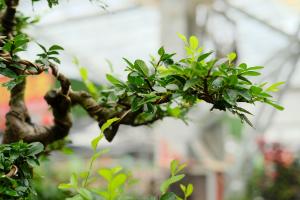How to Prune Lavender Plant
Lavender plants are popular for their beautiful and fragrant flowers, as well as their ability to attract pollinators to your garden. However, like any other plant, lavender requires regular pruning to maintain its health and vigor. In this article, we will discuss how to properly prune lavender plants to ensure that they continue to grow strong and beautiful.
1. Timing
Timing is critical when it comes to pruning lavender plants. The best time to prune your lavender plant is in late summer or early fall, after the plant has finished flowering. Avoid pruning during the winter or early spring, as this could damage the plant and reduce its ability to produce flowers.
2. Tools
In order to properly prune your lavender plant, you will need the right tools. A pair of sharp pruning shears or scissors is essential, as well as a pair of gardening gloves to protect your hands. Make sure that your pruning tool is clean and sharp to prevent tearing or damaging the plant.
3. Techniques
There are several techniques that you can use to prune your lavender plant, depending on your desired outcome. One common method is to cut back the entire plant by one-third its height, leaving only a few inches of green growth. This will help to stimulate new growth and encourage the plant to produce more flowers.
Another technique is to remove any dead or damaged stems, which can promote healthy growth and prevent disease. You can also selectively prune certain branches or stems to control the shape and size of the plant, or to remove any unwanted growth.
4. Aftercare
After pruning your lavender plant, it is important to provide proper aftercare to ensure that it continues to thrive. Water the plant well, and make sure that the soil is moist but not waterlogged. You can also add a layer of mulch around the base of the plant to help retain moisture and suppress weeds.
It is also a good idea to fertilize your lavender plant after pruning, using a balanced, slow-release fertilizer. This will provide the necessary nutrients to support healthy growth and increased flower production.
In conclusion, pruning your lavender plant is a simple but important task that will help to keep it healthy, vigorous, and beautiful. By following these guidelines, you can ensure that your lavender plant continues to thrive and bring joy to your garden for years to come.

 how many times do yo...
how many times do yo... how many planted tre...
how many planted tre... how many pine trees ...
how many pine trees ... how many pecan trees...
how many pecan trees... how many plants comp...
how many plants comp... how many plants can ...
how many plants can ... how many plants and ...
how many plants and ... how many pepper plan...
how many pepper plan...































